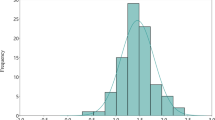Summary
Lysine is a limiting amino acid for optimal nutritional quality in rice grain. In vitro selections using inhibitory levels of lysine plus threonine or s-aminoethylcysteine allow the predictable recovery of variants with elevated levels of lysine and protein. These methods may generate useful starting germplasm for plant breeders. This study was conducted to define the genetics of lysine mutants in progeny from crosses of mutants derived from cells cultured in vitro in the presence of inhibitory levels of lysine plus threonine and s-(2-aminoethyl)-cysteine. In vitro selections produce a wide range of mutants, including endosperm mutants with elevated lysine and protein levels as well as mutants for high and low seed weights. Mutants were analyzed for lysine content by the endosperm half-seed method in which the halves without the embryo were ground and acid hydrolyzed for amino acid determinations. The halves with the embryos were preserved for later germination. In two different F2 populations derived from a cross of a selected mutant x M-101, a parental marker, there was an inverse relationship between seed weight and percent lysine in endosperm protein (R2 0.52 and 0.56). The F2 segregation patterns show that elevated lysine is inherited as a recessive gene and that increased lysine is correlated with decreased seed size. F3 and F4 data provide evidence for the transmission of high lysine genes to advanced germplasm in rice. This work supports our earlier conclusions that high lysine phenotypes can be recovered predictably from in vitro selections. The elevated lysine phenotypes are frequently, but not exclusively, associated with opaque seed. Some segregants from crosses produced increased lysine in plants with near normal seed weight and good fertility.
Similar content being viewed by others
References
Bryan PA, Cawley RD, Brunner CE, Bryan JK (1970) Isolation and characterization of a lysine-sensitive aspartokinase from a multicellular plant. Biochem Biophys Res Commun 41:1211–1217
Cattoir-Reynaerts AE, Degryse E, Verbruggen I, Jacobs M (1983) Selection and characterization of carrot embryoid cultures resistant to inhibition by lysine plus threonine. Biochem Physiol Pflanz 178:18–90
Furuhashi K, Yatazawa M (1970) Methionine-lysine-threonine interrelationships in the amino acid nutrition of rice callus tissue. Plant Cell Physiol 11:569–578
Gengenbach BG, Walter TJ, Green CE, Hibberd KA (1978) Feedback regulation of lysine, threonine and methionine biosynthetic enzymes in corn. Crop Sci 18:471–476
Green CE, Philips RL (1974) Potential selection system for mutants with increased lysine, threonine, and methionine in cereal crops. Crop Sci 14:827–830
Henke RR, Wilson KG, McClure JW, Treick RW (1974) Lysine-methionine interactions in growth and development of Mimulus cardinalis seedlings. Planta 116:333–345
Hibberd KA, Green CA (1982) Inheritance and expression of lysine plus threonine resistance selected in maize tissue culture. Proc Natl Acad Sci USA 79:559–563
Jodon NE (1977) Registration of 34 germplasms of rice. Crop Sci 17:981–982
Juliano BO (1972) The rice caryopsis and its composition. In: Houston DF (ed) Rice chemistry and technology. American Association of Cereal Chemists, St. Paul MN, pp 7–73
Juliano BO (1985) Polysaccharides proteins and lipids of rice. In: Juliano BO (ed) Rice: chemistry and technology. American Association of Cereal Chemists, St. Paul MN, pp 98–142
Kumar I, Khush GS (1987) Genetic analysis of different amylose levels in rice. Crop Sci 27:1167–1172
Matthews BF, Widholm JM (1978) Regulation of lysine and threonine synthesis in carrot cell suspension cultures and whole carrot roots. Planta 141:315–321
Mertz TE (1976) Case histories of existing models. In: Genetic Improvement of Proteins. Prceedings of Workshop, March 18–20, 1974, Board of Agriculture and Renewable Resources, National Academy of Sciences, Washington/DC, pp 57–70
Mertz TE, Bates LS, Nelson OE (1964) Mutant gene that changes protein composition and increases lysine content of maize endosperm. Science 145:279–280
Negrutiu I, Cattoir-Reynearts A, Verbruggen I, Jacobs M (1984) Lysine overproduced mutant with an altered dihydrodipicolinate synthase from protoplasts culture of Nicotiana sylvestris (Spegazzini and Comes). Theor Appl Genet 68:11–20
Rutger JN, Peterson ML, Hu CH (1977) Registration of Calrose 76. Crop Sci 17:978
Rutger JN, Peterson ML, Carnahan HL, Brandon DM (1978) Registration M-101 rice. Crop Sci 19:929
Sano KI, Shho I (1970) Microbial production of L-lysine. III. Production of mutants resistant to S-(2-aminoethyl)-L-cysteine. J Genet Appl Microbiol 16:373–391
Schaeffer GW, Sharpe FT (1981) Lysine in seed protein from S-aminoethyl-L-cysteine resistant anther-derived tissue cultures of rice. In Vitro 17:345–352
Schaeffer GW, Sharpe FT (1983) Mutations and cell selections. In: Owens L (ed) Genetic variation for improved protein in rice. Proc Symp Genet Engineering: Applications to agriculture. Rowman and Allanheld, Totowa/NJ, pp 237–254
Schaeffer GW, Sharpe FT (1987) Increased lysine and seed storage protein in rice plants recovered from calli selected with inhibitory levels of lysine plus threonine and S-(2-aminoethyl)-cysteine. Plant Physiol 84:509–515
Schaeffer GW, Sharpe FT, Cregan PB (1984) Variation for improved protein and yield from rice anther culture. Theor Appl Genet 67:383–389
Schaeffer GW, Sharpe FT, Carnahan HL, Johnson CW (1986) Anther and tissue culture-induced grain chalkiness and associated variants in rice. Plant Cell Tissue Organ Cult 6:149–157
Wenko LK, Treick RW, Wilson KG (1985) Isolation and characterization of a gene encoding meso-diaminopimelate dehydrogenase from Glycine max. Plant Mol Biol 4:197–204
Author information
Authors and Affiliations
Additional information
Communicated by H. F. Linskens
Research done under the auspices of the USDA, ARS, Plant Sciences Institute, Plant Molecular Biology Laboratory, Beltsville, MD 20705, USA
Rights and permissions
About this article
Cite this article
Schaeffer, G.W., Sharpe, F.T. & Dudley, J.T. Segregation for endosperm lysine in F2, F3 and F4 progeny from a cross of in vitro-selected and unselected cultivar of rice. Theoret. Appl. Genetics 77, 176–183 (1989). https://doi.org/10.1007/BF00266183
Received:
Accepted:
Issue Date:
DOI: https://doi.org/10.1007/BF00266183




